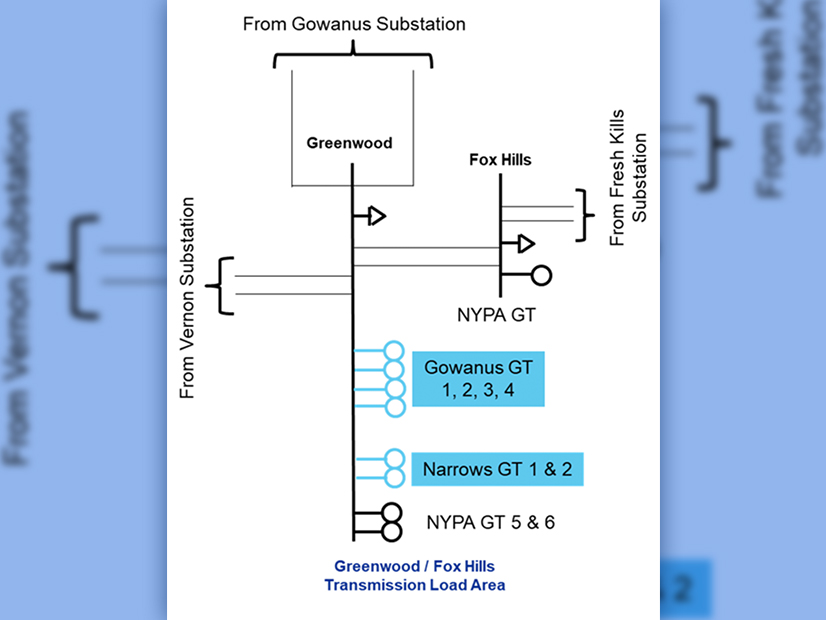The New York Public Service Commission on Thursday approved $800 million in cost recovery by Consolidated Edison for three transmission projects known collectively as the Transmission Reliability and Clean Energy (TRACE) projects.
The projects are needed for reliability in 2023 and 2025 because of the retirement or unavailability of 399 MW of peaking generation located in four out of five New York City boroughs (19-E-0065). In 2019, the state’s Department of Environmental Conservation (DEC) adopted regulations requiring peakers to limit nitrogen oxide emissions during the ozone season or be retired if they can’t comply.
The new projects include the 138-kV Rainey-to-Corona, Gowanus-to-Greenwood and Goethals-to-Greenwood lines.
“It’s likely we will see many more of these projects as we transform our electric system,” PSC Interim Chair John B. Howard said. “The primary reason for the construction of this project is to maintain reliability, but it also builds in safeguards for if and when certain generation assets are curtailed or shut for environmental reasons.”

Graph shows the high-level topology of the Astoria East / Corona 138-kV, standalone TLA. | Con Edison
For the Astoria East/Corona transmission load area (TLA), Con Edison will develop Rainey-to-Corona, a 6-mile, 345/138-kV PAR controlled underground feeder. In the Greenwood/Fox Hills 138-kV TLA, the utility will install two new feeders, including a 1-mile, 345/138-kV PAR controlled line that will connect the 345-kV Gowanus substation with the Greenwood 138-kV substation, increasing transfer capability by about 300 MW.
Con Edison expects to start work immediately. Rainey should be operational by the start of summer 2023, and the Gowanus and Goethals projects are expected to enter service by summer 2025. Because the projects will have climate benefits statewide, cost allocation will be evaluated and considered in future commission orders.
Commissioner Diane Burman voted in favor of the projects but expressed “serious concerns” as the state moves ahead with big changes to the power grid.
She said her top concern in decarbonizing the grid is the reliability of the power supply, ensuring that firm and reliable resources balance the high penetration expected from intermittent resources like wind and solar.
Second is the need for investment in transmission and distribution infrastructure, and recognizing that “the whole nature of the electric power system, and frankly of electric service itself at the local distribution and bulk transmission levels” is rapidly changing, Burman said.
The commission’s third priority is to understand consumer behavior and work with people to achieve the desired outcome at the lowest cost, she said.
Commissioner James Alesi said he believed the approach would help Con Edison meet the goals of the CLCPA as well as comply with the DEC regulations, and hoped that the measure would reduce “pollutants in environmental justice communities and make it easier to transition to a cleaner, low-carbon grid.”
The retiring peaker plants include Con Edison’s 59th Street GT1 (17.1 MW) and 74th Street GT units 1 and 2 (37 MW) in Manhattan; Con Edison’s Hudson Ave unit 5 (16.3 MW) in Vinegar Hill, Brooklyn; the Helix Ravenswood units 1, 10 and 11 (68.6 MW) in Long Island City, Queens; the NRG Astoria GTs (240 MW) in Astoria, Queens; and the NRG Arthur Kill GT1 unit (20 MW) in Staten Island.


